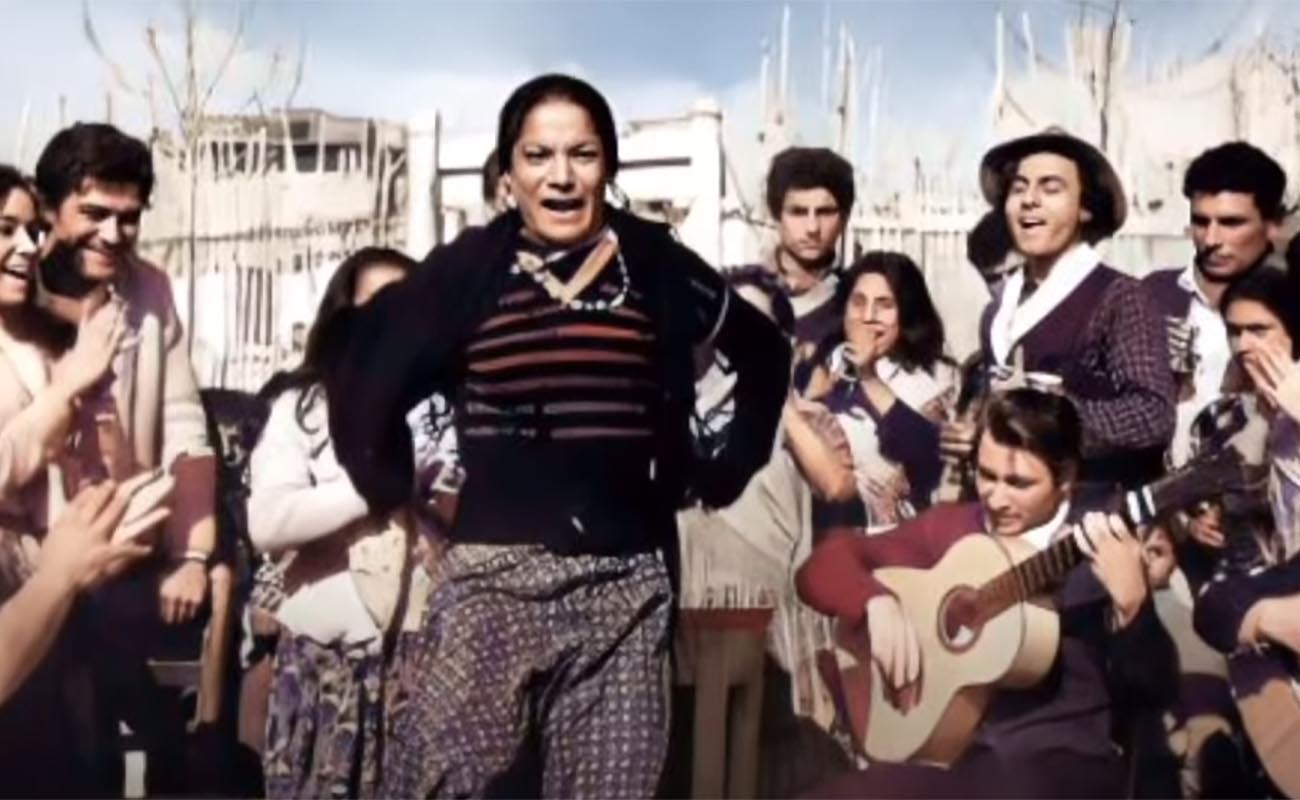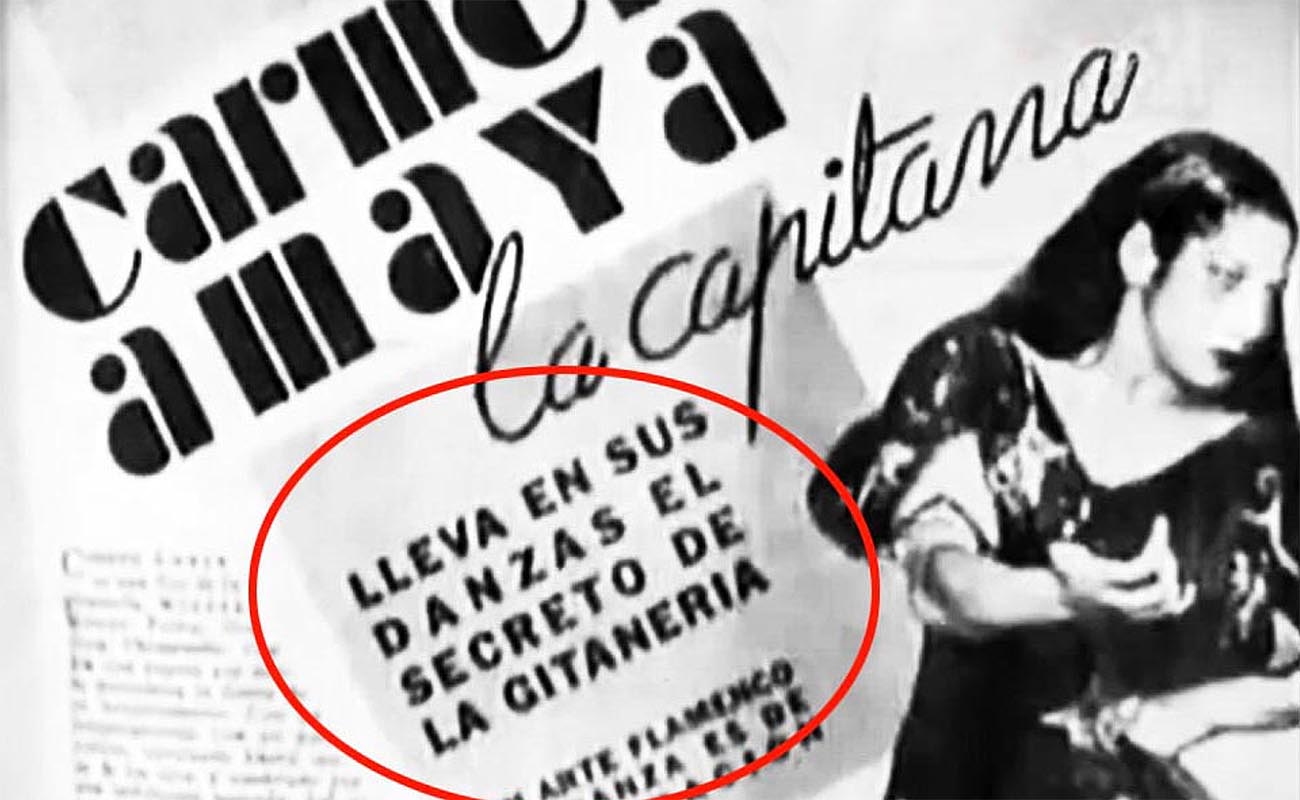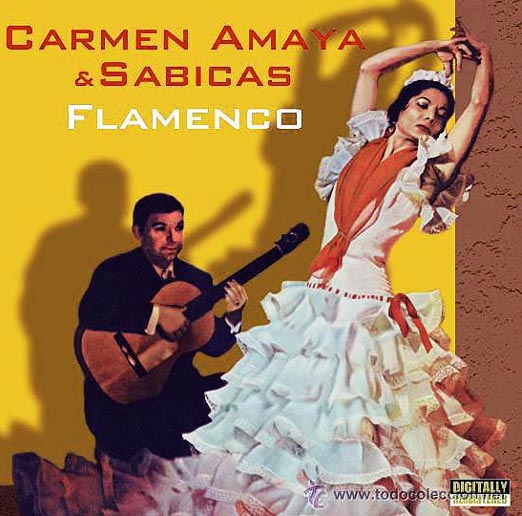The legacy of Carmen Amaya 60 years after her passing
The memory of Carmen’s persona and her art remains highly relevant for the new generation of both male and female dancers. Dancing based on strength, rhythm and intensity.

On November 16 International Flamenco Day will be celebrated with its thirteenth anniversary. As is customary every year, there will be commemorative events, conferences, and a variety of performances. More than a cultural event, it feels mostly promotional… “¡Viva España!” as the song says, as chauvinism runs rampant that day in Andalusia and other regions where flamenco thrives. Three days later, on November 19th, will be the moment to take pause and consider the 60th anniversary of the disappearance of one of the people who most represents flamenco throughout the world. Her name was Carmen Amaya, and it feels right to link both anniversaries as they define one another: Carmen is flamenco…flamenco is Carmen. If anything, remembering the dancer feels more important than the institutional event
In the 19th century, before there was flamenco dance as we know it in modern times, English and French dancers, and the prominent Austrian Fanny Elssler, stylized their Andalusian dances, presenting them throughout Europe. In historic images, we see young women with a sweet submissive attitude.
Young Carmen, born in the Somorrostro neighborhood of Barcelona early in the 20th century, broke all the molds, providing the intensity that everyone has come to associate with flamenco. Before her appearance, there was no doubt about the power of flamenco singing, but female flamenco dance didn’t move beyond the sweetness.
Carmen Amaya popularized the use of trousers for women’s dance. “A panther on the prowl” said one journalist. She exponentially elevated the strength and speed of footwork. “An atomic bomb”. She introduced dramatic leaps. “Demonic and explosive”, “primitive and barbaric”, “threatening”, “a human Vesuvius”… These are authentic quotes from critics and publicity, everyone tripping over one another trying to describe this force of nature, and the delicate-looking submissive dancers became outdated.
I remember a documentary in which old Farruco instructs his 6 or 7-year-old grandson, the current Farruquito, “Dance with anger!” That concept of flamenco reaches its peak with Carmen Amaya, and finds continuity in numerous contemporary dance stars such as Manuela Carrasco, La Farruca, Carmen Cortés, or Belén López, among many others. The so-called Seville school, represented by the maestra Matilde Coral, is the antithesis. In fact, it’s the style that would function as a fascinating contrast to the dancing of Farruco and Rafael el Negro, temperamental artists in the legendary trio Los Bolecos, an effective fusion of both schools.
The legacy of Carmen Amaya changed flamenco dance forever. She expanded the repertoire, added dance to the cante minero of taranto, played castanets in dramatic dances like siguiriya or soleá, and her collaboration with maestro Sabicas broadened concepts.
These are forms that have come to define the genre. The memory of Carmen’s persona and her art remains highly relevant for the new generation of both male and female dancers. Dancing based on strength, rhythm and intensity. A form of expression that broke away from the coquettish sweetness of the female role that had dominated until then. Carmen Amaya came to flamenco, saw it was missing a piece to match the expressive depth of existing vocal and musical expression, and took flamenco into the future with the power of her temperament.






